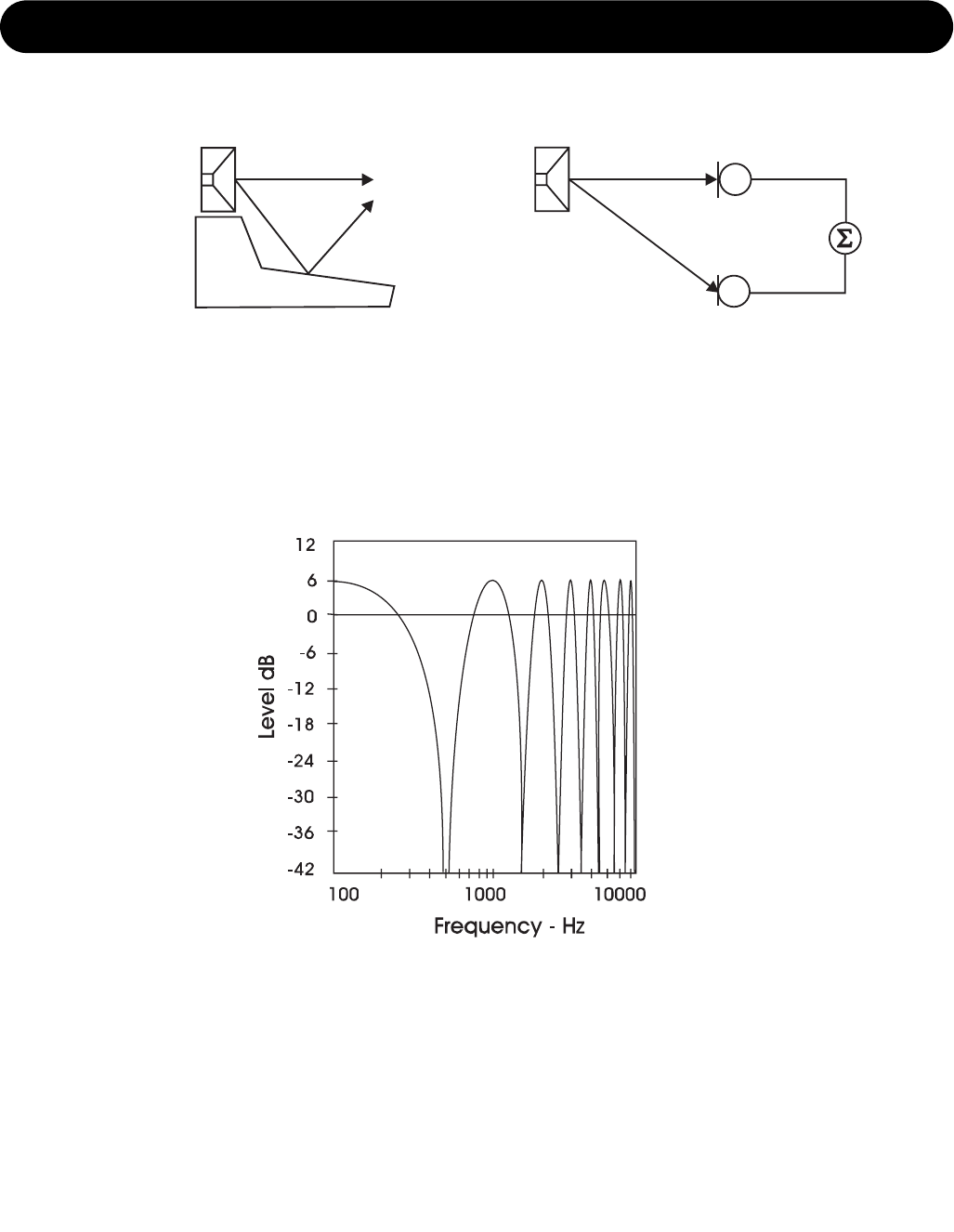
ACOUSTICS - BACKGROUND INFO
38
Two typical situations in which comb filters arise, either acoustically or electrically.
In general: All digital signal processing takes time. This means in practice that comb filter effects can arise if you loop a
signal via, for example, a compressor and combine this signal with the original.
An example of a comb filter created by the combining of two signals with the same amplitude, but
with a time delay between them of just 1 ms.
It can be seen that a dip occurs due to cancellation at 500 Hz, 1.5 kHz, 2.5 kHz, etc.
It can also be seen that the two signals add to double their value (+6 dB) at low frequencies and
with a full wavelength's delay at 1 kHz, 2 kHz, 3 kHz etc.
Dip frequencies
Cancellation occurs for a comb filter at all the frequencies where the two signals are in opposite phase. This occurs when
the time delay comprises duration of ½, 1½, 2½, etc. periods. At 1 kHz the period is 1 ms. Half of the period is 0.5 ms.
If a time delay of precisely 0.5 ms occurs, it means that cancellation will arise, not just at 1 kHz, but also at 2 kHz, 3 kHz,
4 kHz etc.
or +


















